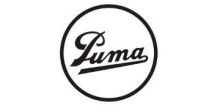




Es ta moto fue verdaderamente la primera y única moto diseñada y fabricada en Argentina, por argentinos. La moto Puma le quitaría el reinado, pero nunca le quitará su condición de 100% argentina.
La historia de las viejas motocicletas Ramonot
Elegante. El mayor esplendor de la fábrica de estas motocicletas fue en 1937.
Carlos Chacón cuenta cómo surgieron las primeras motos argentinas. Fueron fabricadas entre el ’24 y el ’46 en Palmira
SAN MARTÍN
"Hay que escribir la historia antes de que se nos mueran todos los viejos", dice Carlos Chacón (60) , mientras revisa sus papeles. Finalmente el hombre, al que la mayoría identifica como "el historiador", encuentra lo que busca.
Gracias a los recortes y apuntes amarillentos se puede constatar que, en un período estimado entre 1924 y 1946 los hermanos Alberto y Enrique Ramonot diseñaron y fabricaron la primera motocicleta argentina en un avanzado taller ubicado en lo que hoy es el corazón comercial de Palmira. Chacón saca una foto y algunas fotocopias de fotos que se presumen sepias. Allí está: parece una bicicleta con motor. No tiene caja de velocidades ni embrague y la tracción es a polea. Así, tan sencilla, esta moto fue muy codiciada en los años ’30.
La fábrica SIMA (Sociedad Industrial de Motocicletas Argentinas) llegó a producir unas 3.000 unidades y cuatro modelos distintos desde sus instalaciones, ubicadas en la esquina de Italia y Belgrano, en Palmira. La historia comenzó en 1870, cuando Pablo Ramonot llegó al puerto de Buenos Aires, proveniente de Francia. La fiebre amarilla lo empujó hacia Mendoza apenas inaugurado el ferrocarril, en 1885. Un año después Ramonot se afincó en la pequeña villa de Barriales, en Junín. Primero se dedicó al trabajo en la viña, pero poco después inició una pequeña fábrica, bautizada con el nombre Böer, que producía carruajes e implementos agrícolas. En 1890 se casó con Eloísa Pairet y tuvieron siete hijos. Los que heredaron la inventiva de su padre fueron Alberto, que nació en 1896, y Enrique, nacido en 1904. Fueron ellos los que, años después, decidieron ubicar su propia fábrica en la villa de Palmira. Primero se dedicaron a la herrería y a montar generadores de energía eléctrica. Luego idearon un pequeño motor para ser colocados en las bicicletas. Esta idea fue un éxito y poco tiempo después lanzaron al mercado la primera motocicleta Ramonot. Varias empresas mendocinas compraron estos simples vehículos para utilizarlos en la distribución. Paralelamente los fabricantes tenían su propia flota y alquilaban estos rodados por hora. El momento de máximo esplendor fue en 1937. Allí la fabrica tenía unos 100 empleados, entre operarios, administrativos y vendedores. Las Ramonot fueron utilizadas en competición y para ellas se creó una categoría de 100cc. Alcanzaban una velocidad máxima de100km/h. Según los datos recopilados por Chacón, en 1946 el primer gobierno peronista estudió la posibilidad de impulsar la ampliación de la fábrica pero, finalmente, se inclinó por traer al país a la fábrica alemana Sach. Ese fue el fin de las Ramonot. Mario Ramonot tiene hoy 66 años y vive en Godoy Cruz. Es hijo de Enrique y no alcanzó a conocer la fábrica. Todavía dice con orgullo:
"
Comentario
Antonio Spano, quien trabajó en la vieja fábrica Antonio Spano tiene 85 años. En Mendoza se lo recuerda, entre otras cosas, por haber sido senador provincial en tres períodos diferentes, intendente de San Martín y candidato a vicegobernador en 1983. Pero, para recuperar la historia de las motos Ramonot, su testimonio tiene singular importancia por motivos bien distintos al de su pasada vida política. Su primer empleo, cuando era un joven de 14, fue en la fábrica de motos de Palmira, cumpliendo la tarea de tornero. Spano se negó rotundamente a ser fotografiado para esta nota, debido a que no estaba vestido con saco y corbata.
"Es una cuestión de principios", dijo.
Es uno de los pocos que todavía pueden dar testimonio directo de lo que fue la próspera Sociedad Industrial de Motocicletas Argentinas.
"Creo que trabajé allí uno o dos años", recuerda. La vida de Spano ha sido tan activa y emotiva que esa etapa de su vida apenas ocupa un muy pequeño espacio en su memoria. Incluso en ese período ya el futuro senador se perfilaba como uno de los más habilidosos wing derechos que tuvo el Club Atlético Palmira. La casa de don Antonio parece un museo. Las paredes están repletas de cuadros con pergaminos, títulos, reconocimientos, fotos, afiches proselitistas... Dos enormes figuras de Perón y Evita vigilan el entorno. Se pueden ver En el museo particular Motos Antiguas, ubicado en San Juan 660 de Ciudad, se puede ver una de las unidades Ramonot. Hay todavía algunas Ramonot en Rivadavia y en Junín. Son muy codiciadas por los coleccionistas.
Fuente: Diario Uno Sección: Mendoza
Autor: Enrique Pfaab
This motorcycle was the one and only machine entirely designed and manufactured in Argentina, by Argentines. The Puma motorcycle would take away the reign, but it will never take away its 100% Argentine condition.
The heyday of these motorcycles was in the mid-1930s.
Carlos Chacón tells how the first Argentine bikes appeared. They were manufactured between 1924 and 1946 in Palmira
SAN MARTIN
"We have to relate this story before all the old people die", says Carlos Chacón (60), while reviewing his papers. Finally the man, whom the majority identify as "the historian", found what he sought.
Thanks to the cuttings and age-yellowed notes, it can be seen that in an estimated period between 1924 and 1946 the brothers Alberto and Enrique Ramonot designed and manufactured the first Argentine motorcycle in an advanced workshop located in what is now the commercial heart of Palmira. Chacón presents some photocopies of photographs, presumeably sepia. There it is: it looks like a motor cycle. It has no gearbox or clutch and the traction is the pulley. Thus, so simple, this motorcycle was very coveted in the 1930s.
The SIMA factory (Sociedad Industrial de Motocicletas Argentinas) came to produce some 3,000 units and four different models from its facilities, located in the corner of Italia and Belgrano, in Palmira. The story began in 1870, when Pablo Ramonot arrived at the port of Buenos Aires, coming from France. The yellow fever pushed him towards Mendoza as soon as the railway opened, in 1885. A year later Ramonot settled in the small town of Barriales, in Junín. First he went to work in the vineyard, but shortly afterwards he started a small factory, named Böer, which produced carriages and agricultural implements. In 1890 he married Eloisa Pairet and had seven children. Those who inherited his father's inventiveness were Alberto, who was born in 1896, and Enrique, born in 1904. It was they who, years later, decided to locate their own factory in the town of Palmira. First they went to blacksmithing and set up electric power generators. Then they devised a small engine to be placed on bicycles. This idea was a success and shortly after they launched the first Ramonot motorcycle. Several companies in Mendoza bought these simple vehicles for use in distribution. At the same time the manufacturers had their own fleet and rented these wheels per hour. The moment of maximum splendor was in 1937. There the factory had about 100 employees, among operatives, administrators and salesmen.
The Ramonot were used in competition and for them a 100cc category was created. They reached a maximum speed of 100km / h. According to the data compiled by Chacón, in 1946 the first Peronist government studied the possibility of promoting the expansion of the factory but, finally, was inclined to bring the country to the German factory Sach. That was the end of the Ramonot. Mario Ramonot is now 66 years old and lives in Godoy Cruz. He is Enrique's son and did not know the factory. He still says with pride:
"La Ramonot was the only motorcycle designed and manufactured entirely in the country. Everything that came later has some part imported or manufactured in Argentina with international license."
Antonio Spano, who worked in the old factory Antonio Spano is 85 years old. In Mendoza he is remembered, among other things, for being a provincial senator in three different periods, intendant of San Martín and candidate for lieutenant governor in 1983. But to recover the history of the Ramonot bikes, his testimony is singularly important for good reasons Different from his past political life. His first job, when he was a young man of 14, was in the motorcycle factory in Palmira, completing the task of turning. Spano flatly refused to be photographed for this note, because he was not dressed in a sack and tie.
"It's a matter of principle," he said.
It is one of the few that can still give direct testimony of what was the prosperous Industrial Society of Argentine Motorcycles.
"I think I worked there a year or two," he recalls. Spano's life has been so active and emotional that this stage of his life barely occupies a very small space in his memory. Even in that period the future senator was outlined as one of the most skilful wing rights that Club Palmira had. Don Antonio's house looks like a museum. The walls are replete with pictures with parchments, titles, recognitions, photos, posters ... Two huge figures of Perón and Evita watch the surroundings. You can see In the private museum Motos Antiguo, located in San Juan 660 City, you can see one of the Ramonot units. There are still some Ramonot in Rivadavia and in Junín. They are very coveted by collectors.
Source: Diario Uno Section: Mendoza. Author: Enrique Pfaab
Date of the article: 09-10-2007
Originally published by the Club Argentino de Motos PUMA